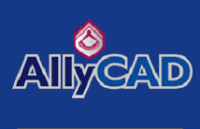Description

CADISON

Digimat
Comprehensive Overview: CADISON vs Digimat
Here's a comprehensive overview of CADISON and Digimat, focusing on their primary functions, target markets, market share, user base, and key differentiating factors.
CADISON
a) Primary Functions and Target Markets
- Primary Functions: CADISON is an integrated engineering solution that combines the capabilities of CAD with engineering data and project management. It facilitates process, equipment, and 3D piping design, mainly for plant engineering projects.
- Target Markets: Its target markets include industries such as chemical, pharmaceutical, water treatment, plant engineering, and construction, where complex infrastructure projects require integrated design and engineering solutions.
b) Market Share and User Base
- Market Share: While specific market share data can be elusive, CADISON holds a significant niche presence in sectors with complex engineering requirements, particularly in Central Europe and Asia.
- User Base: Its user base tends to include medium to large enterprises involved in plant design and engineering, seeking integrated tools for project efficiency and collaboration.
c) Key Differentiating Factors
- Integration: CADISON offers seamless integration of all plant engineering processes, from design to documentation and data management.
- Workflow Automation: It provides automation solutions that help reduce project timeframes and enhance design accuracy through streamlined data processing.
- Collaboration: The platform supports multi-disciplinary collaboration across engineering tasks, contributing to improved communication and fewer errors in project execution.
Digimat
a) Primary Functions and Target Markets
- Primary Functions: Digimat is a multi-scale material modeling technology developed by e-Xstream engineering. It is used to predict the behavior of composite materials and structures to optimize their performance, providing simulation tools for tasks such as microstructural analysis and virtual testing of composites.
- Target Markets: Digimat primarily targets industries like automotive, aerospace, defense, electronics, and consumer goods, where material performance and lightweight design are critical.
b) Market Share and User Base
- Market Share: Digimat commands a notable share in the composite materials simulation market, with its user base comprising leading companies in aerospace and automotive sectors.
- User Base: Its users are generally R&D departments and engineering teams focused on product innovation, efficiency, and reducing material costs through advanced modeling and simulation techniques.
c) Key Differentiating Factors
- Material Modeling: Digimat's core strength lies in its advanced material modeling capabilities, providing accurate predictions of composite behavior.
- Simulation Integration: It integrates with leading FEA (Finite Element Analysis) software to provide comprehensive simulation solutions across various scales.
- Multi-scale Approach: Digimat supports the analysis of materials from the micro level to the macro level, facilitating detailed assessments of composite structures under various loading conditions.
Comparison and Conclusion
CADISON and Digimat serve very different purposes and target distinct markets. CADISON is pivotal for industrial plant design and its related engineering workflows, focusing on integrating CAD with engineering project management. In contrast, Digimat excels in the simulation and modeling of composite materials, critical for the innovation and optimization of products in sectors dependent on high-performance materials.
Their market shares reflect their niche rather than direct competition, as they cater to specialized needs within their respective domains. CADISON differentiates itself through comprehensive project integration and workflow automation, while Digimat stands out with its superior material modeling and simulation capabilities. Both are valuable tools in their fields and are chosen based on the specific needs of engineering projects or material analysis.
Contact Info

Year founded :
Not Available
+49 61 96934900
Not Available
Germany
http://www.linkedin.com/company/cadison3d

Year founded :
1984
Not Available
Not Available
Brazil
Not Available
Feature Similarity Breakdown: CADISON, Digimat
CADISON and Digimat are both software solutions, but they cater to different industries and have distinct functionalities. Here’s a breakdown of their feature similarities and differences:
a) Core Features in Common
-
Engineering Focus: Both CADISON and Digimat are designed for use in engineering environments, supporting the creation, analysis, and management of complex systems or products.
-
Integration Capabilities: Both solutions offer integration with other engineering tools and systems, facilitating streamlined workflows.
-
Data Management: Each platform provides essential data management capabilities, ensuring that users can efficiently handle complex datasets inherent in engineering projects.
b) User Interface Comparison
-
CADISON:
- Design: CADISON combines 2D and 3D functionalities with data management, often featuring a user interface that is tailored for plant design and engineering workflows.
- Navigation: The interface usually emphasizes integration with CAD platforms and exhibits a structured approach to managing project components and data.
-
Digimat:
- Design: Primarily focused on material modeling and simulation, Digimat’s interface is more analytical, with a focus on simulation options and material properties.
- Navigation: The UI is typically geared towards providing detailed insights and simulations, allowing users to navigate complex material behaviors and performance predictions effectively.
c) Unique Features
-
CADISON:
- Plant Design Specifics: CADISON is particularly strong in plant and process engineering. It provides specialized tools for design, engineering, and operation of plant facilities.
- Project Data Management: Offers superior capabilities in managing engineering data and documents throughout the project lifecycle.
- Collaborative Features: Facilitates collaborative work by integrating multi-discipline engineering data into a single environment.
-
Digimat:
- Material Modeling and Simulation: Digimat stands out with its advanced capabilities in modeling composite materials and simulating their behavior. It provides deep insights into how materials will perform under varying conditions.
- Micromechanics: The software excels in simulating the micromechanical behavior of materials, which is pivotal for industries relying heavily on composite materials.
- Integration with CAE Software: Digimat provides comprehensive integration with CAE software tools, making it a vital tool for predictive modeling in material engineering.
Conclusion
While both CADISON and Digimat serve engineering needs, they cater to different aspects of engineering. CADISON is more aligned with plant design and engineering project management, while Digimat is tailored for material science and composite material simulation. Each has unique features that make them suitable for their respective fields, and their interfaces reflect the specific requirements of their user bases.
Features

Not Available

Not Available
Best Fit Use Cases: CADISON, Digimat
CADISON and Digimat are both specialized software solutions catering to different aspects of design, engineering, and simulation in various industries. Here’s how they best fit into specific business use cases and scenarios:
CADISON:
a) Best Fit Use Cases:
-
Industries: CADISON is particularly well-suited for industries involved in plant design and engineering, such as chemical, pharmaceutical, food and beverage, and energy sectors. It is designed to streamline the design and maintenance of complex industrial facilities.
-
Project Types: CADISON is ideal for projects that require integrated plant design, project management, and operational efficiency. It is best for businesses involved in designing and executing large-scale infrastructure projects, where multi-disciplinary collaboration is essential.
-
Functions and Features: CADISON is favored for its ability to integrate different engineering disciplines into a single platform, enabling seamless collaboration. It offers comprehensive documentation and process management, which is crucial for engineering firms that handle complex projects with regulatory compliance needs.
Digimat:
b) Preferred Use Cases:
-
Industries: Digimat caters to industries focused on material modeling and composite materials, such as automotive, aerospace, consumer goods, and electronics manufacturing. It is particularly valuable for sectors that rely heavily on advanced material analysis and lightweight design.
-
Scenarios: Digimat is preferred when a project involves developing products with composite materials or complex heterogeneous material mixes. It is ideal for simulations that necessitate accurate predictions of material behavior under different conditions, such as stress or temperature changes.
-
Capabilities: Digimat excels in multi-scale material modeling, helping businesses optimize the design and performance of their products by predicting how materials will behave in real-world scenarios. It provides a competitive edge in innovation for companies focused on advanced materials.
Catering to Different Industry Verticals and Company Sizes:
-
CADISON:
- Industry Verticals: CADISON caters to the engineering and construction sectors, with a focus on industrial plant design. It supports businesses in handling extensive documentation and regulatory requirements, making it a favorite for companies involved in EPC (Engineering, Procurement, and Construction) projects.
- Company Sizes: While CADISON is scalable, it is particularly beneficial for medium to large enterprises with substantial engineering projects and cross-discipline collaboration, as it requires investment in both software and training for optimized usage.
-
Digimat:
- Industry Verticals: Digimat is versatile in its application across automotive and aerospace industries due to the need for lightweight and innovative materials. It also serves consumer goods companies in designing products that are both durable and market-friendly.
- Company Sizes: Digimat is suitable for both small and large companies that are involved in material innovation or product development. It helps smaller companies with advanced material needs to compete with larger firms by providing detailed insights into material behavior, reducing time and cost in product development cycles.
By aligning CADISON and Digimat to their respective strengths and industry requirements, businesses can achieve greater efficiencies, innovation, and competitive advantage in their respective fields.
Pricing

Pricing Not Available

Pricing Not Available
Metrics History
Metrics History
Comparing undefined across companies
Conclusion & Final Verdict: CADISON vs Digimat
To provide a well-rounded conclusion and final verdict on CADISON and Digimat, let's address each point based on the functionalities and typical use cases of both products. Please note that CADISON is primarily used for engineering design, specifically in sectors like piping, plant design, and electrical engineering, while Digimat is a materials modeling software used for analyzing and predicting the behavior of composite materials.
a) Best Overall Value
When considering the best overall value, it is important to align the choice with the user's specific needs:
-
CADISON: Offers significant value for companies involved in complex engineering projects, especially in the fields of mechanical, electrical, and plant engineering. It integrates processes and disciplines within a single platform, enhancing collaboration and efficiency.
-
Digimat: Provides excellent value for industries focused on material analysis, particularly where composite materials play a key role. It helps in reducing physical prototyping and optimizing material performance through simulation.
Verdict: The best overall value depends on the primary needs of the user. CADISON is more valuable for engineering design projects, while Digimat excels in material analysis and simulation.
b) Pros and Cons
CADISON
Pros:
- Integrated solutions for multi-discipline engineering projects, facilitating improved collaboration.
- Robust tools for designing and managing large-scale infrastructure projects.
- Reduces project timelines with seamless data handling.
Cons:
- Steeper learning curve for new users unfamiliar with complex engineering software.
- May be overkill for projects that do not require its full range of capabilities.
Digimat
Pros:
- Advanced material modeling capabilities that streamline the design of composite materials.
- Reduces need for extensive physical testing, saving both time and costs.
- Well-suited for industries such as aerospace, automotive, and consumer goods where material behavior is critical.
Cons:
- Primarily focused on material modeling, limiting its usefulness outside this niche.
- Can be complex to integrate into existing workflows without proper training.
c) Recommendations
-
Assess Needs: Users should first clearly define their primary needs. If the focus is on infrastructure and multidisciplinary engineering projects, CADISON is the favorable choice. If material behavior and composite analysis are critical, then Digimat should be considered.
-
Consider Integration: Evaluate how each software would integrate into existing workflows and systems. Consider compatibility with other tools used in your organization.
-
Training & Support: Determine the level of in-house expertise available and the willingness to invest in training. Both tools have learning curves, but the choice may tilt based on the availability of skilled personnel or resources for training.
-
Budget & ROI: Compare the costs and expected return on investment. Sometimes a higher initial investment is justified by the efficiency and performance improvements brought by the software.
In conclusion, choosing between CADISON and Digimat largely depends on the specific requirements and focus areas of your projects. Aligning software capabilities with business goals and project requirements will provide the best overall value.
Add to compare
Add similar companies




